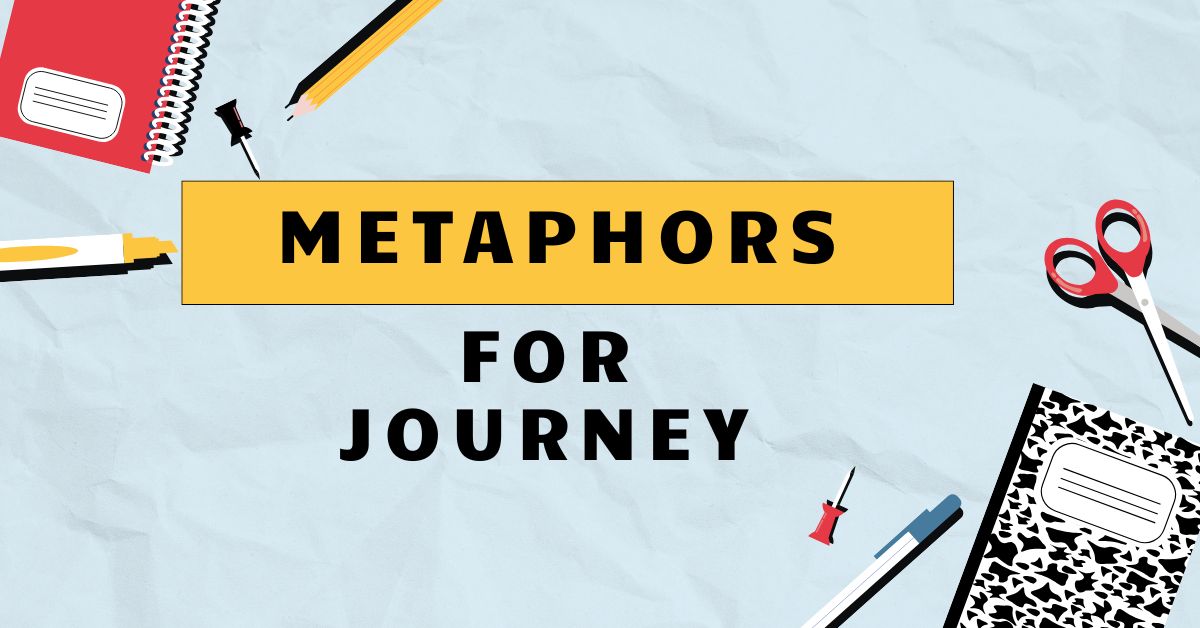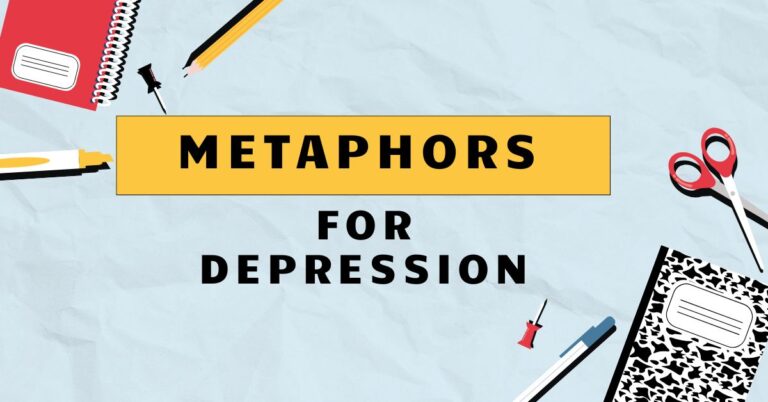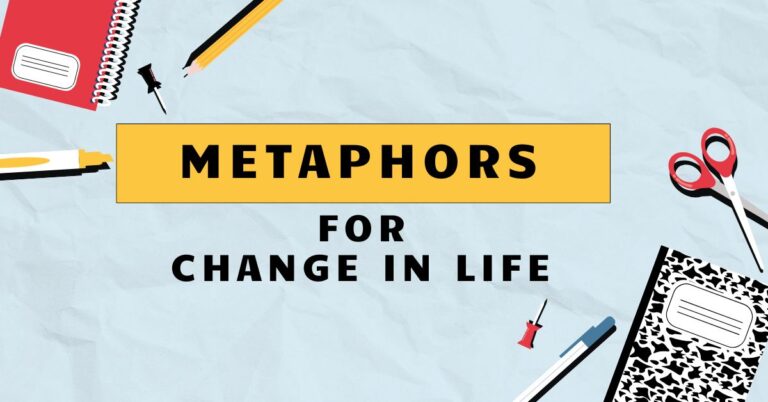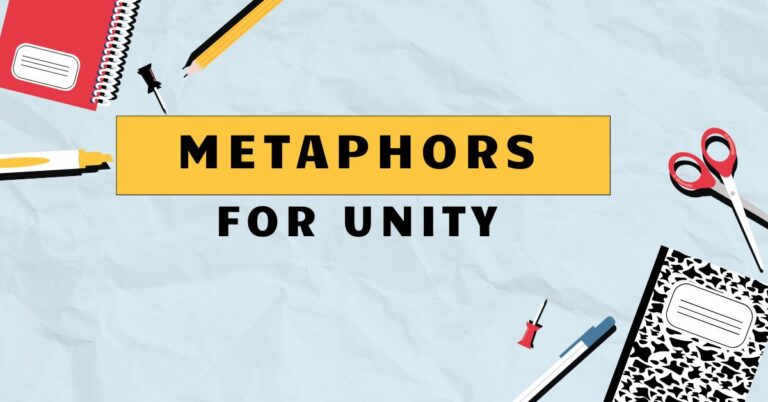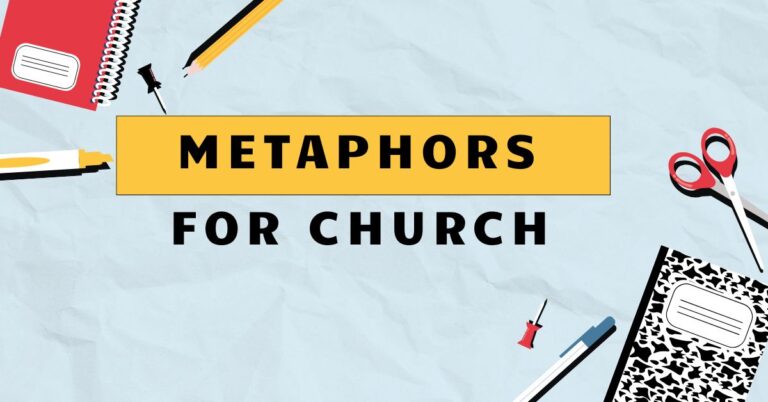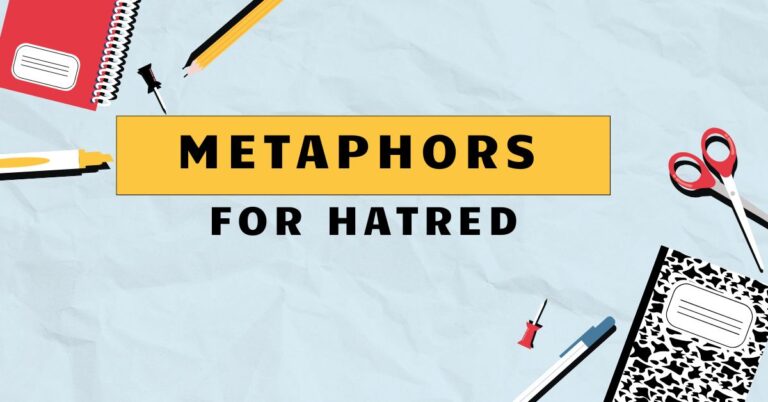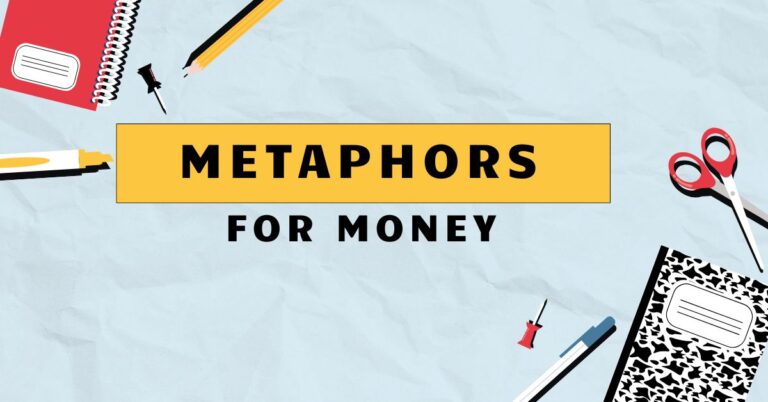35 Journey Metaphors: Exploring Figurative Language in English
Metaphors are powerful tools that enrich our language and deepen our understanding of abstract concepts. Among the most common and versatile types of metaphors are those that use the idea of a journey to represent other aspects of life, such as personal growth, career progression, or even relationships.
Understanding journey metaphors allows us to not only interpret literature and everyday conversations more effectively but also to express ourselves with greater nuance and creativity. This article will explore the definition, structure, types, and usage of journey metaphors, providing numerous examples and practical exercises to help you master this essential aspect of English figurative language.
Whether you are an English language learner, a student of literature, or simply someone looking to enhance your communication skills, this guide will provide you with a comprehensive understanding of journey metaphors. By the end of this article, you will be able to identify, analyze, and effectively use journey metaphors in your own writing and speech.
Table of Contents
- Introduction
- Definition of Journey Metaphors
- Structural Breakdown
- Types of Journey Metaphors
- Examples of Journey Metaphors
- Usage Rules
- Common Mistakes
- Practice Exercises
- Advanced Topics
- FAQ
- Conclusion
Definition of Journey Metaphors
A journey metaphor is a figure of speech that uses the concept of a journey to represent something else, typically an abstract idea, experience, or process. At its core, a metaphor is a comparison between two unlike things without using “like” or “as.” In the case of a journey metaphor, the source domain (the journey) provides a framework for understanding the target domain (the abstract concept).
This framework includes elements such as a starting point, a destination, obstacles, paths, and companions.
Journey metaphors are incredibly versatile because the experience of a journey is universally relatable. We all understand the basic elements of travel, whether it’s a physical trip or a metaphorical one.
This shared understanding makes journey metaphors particularly effective in communication, allowing writers and speakers to convey complex ideas in a simple and engaging way. The function of a journey metaphor is to provide a relatable and vivid framework for understanding abstract concepts, making them more accessible and memorable.
The context of a journey metaphor can vary widely, appearing in literature, speeches, everyday conversations, and even business presentations.
Structural Breakdown
The structure of a journey metaphor typically involves several key elements that mirror the components of an actual journey. These elements provide a framework for understanding the abstract concept being represented.
- The Traveler: This represents the individual or entity undergoing the experience. In the context of personal growth, the traveler is the person evolving. In a career context, it might be the employee advancing in their field.
- The Starting Point: This signifies the initial state or condition. For example, the beginning of a project, a relationship, or a life stage.
- The Destination: This represents the goal or desired outcome. It could be achieving a specific objective, reaching a state of enlightenment, or finding fulfillment.
- The Path: This symbolizes the course of action or the series of events that lead to the destination. It might involve challenges, detours, and unexpected turns.
- Obstacles: These represent the challenges, setbacks, or difficulties encountered along the way. They could be internal struggles, external pressures, or unforeseen circumstances.
- Companions: These are the people who provide support, guidance, or assistance during the journey. They could be mentors, friends, family members, or colleagues.
- Vehicles: These are the means or tools used to progress along the path. They could be skills, resources, strategies, or technologies.
Understanding these structural elements helps in both interpreting and creating journey metaphors. By recognizing these components, we can better grasp the intended meaning and appreciate the richness of the figurative language.
Types of Journey Metaphors
Journey metaphors can be broadly categorized based on the abstract concepts they represent. Here are some common types:
Personal Growth
Personal growth metaphors use the journey to represent the process of self-improvement, learning, and development. These metaphors often emphasize the challenges and rewards of striving to become a better version of oneself.
They highlight the importance of perseverance, resilience, and self-discovery.
Career Progression
Career progression metaphors depict professional advancement as a journey through different stages, levels, or roles. These metaphors often involve climbing a ladder, navigating a maze, or embarking on a quest.
They emphasize the importance of skills, experience, and networking in achieving career goals.
Relationships
Relationship metaphors portray the development and maintenance of interpersonal connections as a journey shared between two or more people. These metaphors often involve navigating shared paths, overcoming obstacles together, and reaching milestones as a team.
They emphasize the importance of communication, trust, and commitment.
Life and Death
Life and death metaphors use the journey to represent the span of a lifetime, from birth to death. These metaphors often involve a pilgrimage, a voyage, or a final crossing.
They emphasize the importance of living a meaningful life and preparing for the inevitable end.
Examples of Journey Metaphors
To illustrate the different types of journey metaphors, here are some examples organized by category:
Personal Growth Examples
The following table provides examples of journey metaphors related to personal growth. Each example illustrates how the concept of a journey is used to represent the process of self-improvement and development.
| Metaphor | Explanation |
|---|---|
| “Embarking on a journey of self-discovery.” | Starting a process of learning about oneself. |
| “Navigating the path to enlightenment.” | Overcoming challenges to achieve a state of understanding. |
| “Climbing the mountain of self-improvement.” | Making progress in becoming a better person. |
| “Walking the road to recovery.” | Healing from a physical or emotional trauma. |
| “Sailing through the sea of emotions.” | Experiencing and processing a range of feelings. |
| “Treading the path of mindfulness.” | Practicing awareness and presence in the moment. |
| “Venturing into the unknown territories of the mind.” | Exploring new ideas and perspectives. |
| “Journeying towards inner peace.” | Seeking tranquility and contentment. |
| “The uphill battle of overcoming addiction.” | Facing a difficult and challenging struggle. |
| “The long and winding road to self-acceptance.” | A gradual process of accepting oneself. |
| “Mapping out a course for personal development.” | Planning a strategy for self-improvement. |
| “Setting sail towards a new chapter in life.” | Beginning a new phase of personal growth. |
| “Stepping onto the path of self-love.” | Starting to practice self-compassion and care. |
| “Wandering through the wilderness of uncertainty.” | Experiencing confusion and doubt during a transition. |
| “The rocky road to self-forgiveness.” | A difficult process of forgiving oneself. |
| “Traversing the landscape of personal growth.” | Experiencing various aspects of self-improvement. |
| “Embarking on a quest for meaning and purpose.” | Searching for deeper significance in life. |
| “Navigating the labyrinth of the soul.” | Exploring the complexities of one’s inner self. |
| “The ascent to emotional maturity.” | Progressing towards greater emotional stability. |
| “The pilgrimage to self-realization.” | A journey towards understanding one’s true potential. |
| “Following the trail of intuition.” | Trusting one’s inner guidance and instincts. |
| “Crossing the bridge to a better self.” | Making a transition towards positive change. |
| “The voyage towards self-discovery never ends.” | Personal growth is a continuous process. |
| “Each step on the path of self-improvement brings new insights.” | Every action contributes to greater understanding. |
| “The journey inward is the most rewarding of all.” | Self-reflection leads to profound personal growth. |
Career Progression Examples
This table illustrates how journey metaphors are used to describe career advancement and professional development. These metaphors often highlight the challenges, opportunities, and milestones encountered in the workplace.
| Metaphor | Explanation |
|---|---|
| “Climbing the corporate ladder.” | Advancing through the ranks in a company. |
| “Navigating the career path.” | Making strategic decisions to achieve professional goals. |
| “Embarking on a new career venture.” | Starting a new job or business. |
| “Sailing through the waters of entrepreneurship.” | Starting and running a business. |
| “Walking the road to success.” | Working towards achieving professional achievements. |
| “Treading the path of leadership.” | Developing and exercising leadership skills. |
| “Ascending to the peak of one’s profession.” | Reaching the highest level of achievement in a career. |
| “Journeying through the landscape of innovation.” | Exploring new ideas and technologies in a field. |
| “The uphill climb to the top of the industry.” | Facing challenges to achieve industry leadership. |
| “The long and winding road to career fulfillment.” | A gradual process of finding satisfaction in one’s work. |
| “Mapping out a career trajectory.” | Planning a long-term professional path. |
| “Setting sail towards a promotion.” | Working towards earning a higher position. |
| “Stepping onto the path of professional development.” | Starting to improve skills and knowledge. |
| “Wandering through the maze of office politics.” | Navigating complex workplace relationships. |
| “The rocky road to career stability.” | Facing challenges to secure a stable job. |
| “Traversing the landscape of the job market.” | Exploring various job opportunities. |
| “Embarking on a quest for a dream job.” | Searching for an ideal career. |
| “Navigating the labyrinth of corporate bureaucracy.” | Dealing with complex organizational procedures. |
| “The ascent to executive leadership.” | Progressing towards a top-level management role. |
| “The pilgrimage to professional mastery.” | A journey towards becoming an expert in one’s field. |
| “Following the trail of innovation.” | Pursuing new ideas and technologies. |
| “Crossing the bridge to a new career.” | Making a transition to a different profession. |
| “The voyage towards career success requires perseverance.” | Success demands consistent effort. |
| “Each step on the career path builds valuable experience.” | Experience is gained from every action. |
| “The journey to professional fulfillment is unique for everyone.” | Career satisfaction varies from person to person. |
Relationships Examples
The following table presents examples of journey metaphors used to describe the dynamics and evolution of relationships. These metaphors often emphasize the shared experiences, challenges, and milestones that couples or friends encounter together.
| Metaphor | Explanation |
|---|---|
| “Embarking on a journey together.” | Starting a relationship or partnership. |
| “Navigating the ups and downs of marriage.” | Dealing with the challenges and joys of married life. |
| “Walking the path of friendship.” | Maintaining a supportive and caring friendship. |
| “Sailing through the storms of conflict.” | Overcoming disagreements and arguments. |
| “Treading the road of commitment.” | Staying dedicated and loyal in a relationship. |
| “Climbing the mountain of understanding.” | Working to understand each other better. |
| “Venturing into the depths of intimacy.” | Developing a deep emotional connection. |
| “Journeying towards a shared future.” | Planning and working towards a common goal. |
| “The uphill struggle to maintain a long-distance relationship.” | Facing the challenges of physical separation. |
| “The long and winding road to forgiveness.” | A gradual process of forgiving each other. |
| “Mapping out a relationship timeline.” | Planning the stages and milestones of a relationship. |
| “Setting sail towards a lifetime of love.” | Starting a relationship with the intention of long-term commitment. |
| “Stepping onto the path of mutual respect.” | Beginning to value each other’s opinions and feelings. |
| “Wandering through the garden of romance.” | Experiencing the joys and pleasures of a romantic relationship. |
| “The rocky road to reconciliation.” | Facing challenges to restore a broken relationship. |
| “Traversing the landscape of shared experiences.” | Creating memories and building a common history. |
| “Embarking on a quest for true love.” | Searching for a deep and meaningful romantic connection. |
| “Navigating the labyrinth of family dynamics.” | Dealing with complex family relationships and issues. |
| “The ascent to deeper understanding in a relationship.” | Progressing towards greater empathy and insight. |
| “The pilgrimage to lasting love.” | A journey towards a long-term and fulfilling relationship. |
| “Following the trail of shared dreams.” | Pursuing common goals and aspirations. |
| “Crossing the bridge to forgiveness.” | Making a transition towards letting go of past hurts. |
| “The voyage towards enduring love requires constant effort.” | Love needs consistent work and attention. |
| “Each step on the path of friendship builds stronger bonds.” | Shared experiences strengthen friendships. |
| “The journey of a relationship is unique to each couple.” | Every relationship has its own distinct path. |
Life and Death Examples
This table provides examples of journey metaphors used to represent the span of life and the transition of death. These metaphors often involve themes of purpose, legacy, and the final destination.
| Metaphor | Explanation |
|---|---|
| “Life is a journey, not a destination.” | Emphasizing the importance of the experiences along the way. |
| “The final journey home.” | Representing death as a return to a final resting place. |
| “Walking the path of life.” | Living one’s life and experiencing its various stages. |
| “Sailing into the sunset.” | Approaching the end of life. |
| “Treading the road to eternity.” | Living a life with a focus on spiritual or lasting impact. |
| “Climbing the mountain of existence.” | Navigating the challenges and triumphs of life. |
| “Venturing into the afterlife.” | Experiencing the unknown beyond death. |
| “Journeying through the seasons of life.” | Experiencing the different phases of life. |
| “The uphill battle against mortality.” | Facing the inevitability of death. |
| “The long and winding road to the end of life.” | A gradual process of aging and approaching death. |
| “Mapping out a life’s course.” | Planning and living a meaningful life. |
| “Setting sail towards the unknown.” | Facing the uncertainties of the future and death. |
| “Stepping onto the path of destiny.” | Living according to one’s fate or purpose. |
| “Wandering through the garden of memories.” | Reflecting on past experiences. |
| “The rocky road to acceptance of mortality.” | Facing challenges to come to terms with death. |
| “Traversing the landscape of a lifetime.” | Experiencing the various events and stages of life. |
| “Embarking on a quest for meaning in life.” | Searching for purpose and significance. |
| “Navigating the labyrinth of existence.” | Dealing with the complexities and uncertainties of life. |
| “The ascent towards transcendence.” | Progressing towards a state beyond physical existence. |
| “The pilgrimage to the afterlife.” | A journey towards the final destination after death. |
| “Following the trail of one’s legacy.” | Leaving a lasting impact on the world. |
| “Crossing the bridge to the next life.” | Making a transition from life to death. |
| “The voyage of life is filled with unexpected turns.” | Life is full of surprises and changes. |
| “Each step on the path of life builds a unique story.” | Every experience contributes to one’s personal narrative. |
| “The journey of life is a precious gift.” | Life is to be valued and cherished. |
Usage Rules
When using journey metaphors, it’s important to follow certain guidelines to ensure clarity and effectiveness. Here are some key rules:
- Consistency: Maintain consistency in the metaphor throughout your writing or speech. Avoid mixing metaphors that create confusing or contradictory images.
- Relevance: Ensure the journey metaphor is relevant to the abstract concept you are trying to convey. The comparison should be logical and meaningful.
- Clarity: Use clear and straightforward language to avoid ambiguity. Make sure your audience can easily understand the connection between the journey and the abstract concept.
- Originality: While common journey metaphors can be effective, try to create original and creative comparisons to make your writing more engaging and memorable.
- Context: Consider the context in which you are using the metaphor. Tailor your language and imagery to suit the audience and the overall tone of your communication.
By following these rules, you can use journey metaphors effectively to enhance your writing and communication skills.
Common Mistakes
Several common mistakes can undermine the effectiveness of journey metaphors. Here are some examples of errors to avoid:
| Incorrect | Correct | Explanation |
|---|---|---|
| “He climbed the ladder of success and then sailed into the sunset.” | “He climbed the ladder of success.” or “He sailed into the sunset of his career.” | Mixing metaphors can create confusing images. Choose one metaphor and stick with it. |
| “The journey of life is a piece of cake.” | “The journey of life is a challenging adventure.” | The metaphor should accurately reflect the complexity and challenges of life. |
| “She embarked on a career path that was a straight line.” | “She embarked on a career path that was full of twists and turns.” | A journey metaphor usually implies challenges and changes. |
| “Our relationship is a never-ending voyage.” | “Our relationship is a challenging but rewarding voyage.” | A metaphor should provide more specific details about the relationship. |
| “The path to self-discovery was a walk in the park.” | “The path to self-discovery was a challenging trek through the wilderness.” | Self-discovery often involves challenges and introspection, not ease. |
Avoiding these common mistakes will help you use journey metaphors more effectively and enhance the clarity and impact of your writing.
Practice Exercises
To reinforce your understanding of journey metaphors, here are some practice exercises:
Exercise 1: Identifying Journey Metaphors
Identify the journey metaphors in the following sentences:
| Question | Answer |
|---|---|
| 1. “Life is a winding road full of unexpected turns.” | “Life is a winding road.” |
| 2. “She navigated the treacherous waters of corporate politics.” | “Navigated the treacherous waters.” |
| 3. “He embarked on a journey of self-discovery.” | “Embarked on a journey.” |
| 4. “Their relationship was a rollercoaster of emotions.” | “Rollercoaster of emotions” (though not a journey, this is a metaphor) |
| 5. “The path to success is not always a straight line.” | “The path to success.” |
| 6. “He is climbing the ladder to success.” | “Climbing the ladder.” |
| 7. “She is on a voyage of self-discovery.” | “Voyage of self-discovery.” |
| 8. “My life is a marathon, not a sprint.” | “Life is a marathon.” |
| 9. “We are all travelers on this earth.” | “Travelers on this earth.” |
| 10. “The road to enlightenment is long and hard.” | “The road to enlightenment.” |
Exercise 2: Creating Journey Metaphors
Create a journey metaphor for each of the following concepts:
| Concept | Metaphor |
|---|---|
| 1. Learning a new language | Embarking on a linguistic expedition. |
| 2. Starting a new business | Setting sail on a sea of entrepreneurship. |
| 3. Overcoming a personal challenge | Climbing a mountain of adversity. |
| 4. Ending a relationship | Reaching the end of a shared road. |
| 5. Achieving a long-term goal | Arriving at a long-sought destination. |
| 6. Writing a book | Navigating the landscape of storytelling. |
| 7. Raising children | Guiding young travelers through life. |
| 8. Dealing with grief | Wandering through a dark forest of sorrow. |
| 9. Recovering from illness | Walking the road to recovery. |
| 10. Finding inner peace | Journeying to a tranquil oasis of the soul. |
Exercise 3: Analyzing Journey Metaphors
Analyze the structural elements of the following journey metaphor: “Life is a marathon, not a sprint.”
| Element | Analysis |
|---|---|
| The Traveler | The individual experiencing life. |
| The Starting Point | Birth or the beginning of life. |
| The Destination | Death or the end of life. |
| The Path | The experiences, challenges, and events of life. |
| Obstacles | Difficulties, setbacks, and hardships encountered in life. |
| Companions | Friends, family, and other people who provide support. |
| Vehicles | Skills, resources, and strategies used to navigate life. |
Advanced Topics
For advanced learners, exploring the nuances of journey metaphors can involve delving into more complex aspects, such as:
- Extended Metaphors: These are metaphors that are developed over several sentences or paragraphs, creating a more elaborate and detailed comparison.
- Subverted Metaphors: These are metaphors that challenge or contradict conventional expectations, creating a surprising or thought-provoking effect.
- Intercultural Variations: Journey metaphors can vary across cultures, reflecting different values, beliefs, and experiences.
- Cognitive Linguistics: This field explores the relationship between language and thought, providing insights into how metaphors shape our understanding of the world.
By exploring these advanced topics, you can deepen your understanding of journey metaphors and enhance your ability to use them in sophisticated and creative ways.
FAQ
Here are some frequently asked questions about journey metaphors:
- What is the difference between a metaphor and a simile?
A metaphor is a direct comparison between two unlike things without using “like” or “as,” while a simile uses “like” or “as” to make the comparison. For example, “Life is a journey” is a metaphor, while “Life is like a journey” is a simile.
- Why are journey metaphors so common?
Journey metaphors are common because the concept of a journey is universally relatable. Everyone understands the basic elements of travel, making it an effective framework for understanding abstract concepts.
- How can I create more original journey metaphors?
To create original journey metaphors, try to think beyond common comparisons. Consider specific details and unique aspects of both the journey and the abstract concept you are trying to connect.
- Can journey metaphors be used in business writing?
Yes, journey metaphors can be used effectively in business writing to convey complex ideas in a simple and engaging way. For example, you might describe a project as “embarking on a new venture” or “navigating the challenges of the market.”
- How do I avoid mixing metaphors?
To avoid mixing metaphors, maintain consistency in your imagery. Choose one metaphor and stick with it throughout your writing or speech. Avoid combining elements from different metaphors that create confusing or contradictory images.
- What role do journey metaphors play in literature?
Journey metaphors play a significant role in literature by adding depth, symbolism, and emotional resonance to narratives. They can represent characters’ internal struggles, thematic developments, and the overall message of the story.
- Are there any cultures where journey metaphors are not commonly used?
While the concept of a journey is universal, the specific imagery and cultural associations may vary. Some cultures may have alternative metaphors that are more prevalent, reflecting their unique values and experiences. However, journey metaphors are generally widespread across different cultures.
- How can understanding journey metaphors improve my communication skills?
Understanding journey metaphors can improve your communication skills by allowing you to express complex ideas in a more engaging and relatable way. It also enhances your ability to interpret and analyze the language used by others.
- What is an extended journey metaphor?
An extended journey metaphor is a metaphor that is developed over several sentences or even paragraphs. It allows for a more detailed and nuanced comparison between the journey and the abstract concept, enriching the text with deeper layers of meaning.
Conclusion
Journey metaphors are a fundamental aspect of English figurative language, providing a powerful tool for understanding and expressing abstract concepts. By using the relatable framework of a journey, we can convey complex ideas in a simple, engaging, and memorable way.
Understanding the structure, types, and usage rules of journey metaphors allows us to not only interpret literature and everyday conversations more effectively but also to enhance our own writing and communication skills.
As you continue to explore the world of language, remember to pay attention to the metaphors that shape our thinking and communication. Practice identifying and creating journey metaphors in your own writing and speech, and you will find that your ability to express yourself with clarity, creativity, and impact will grow.
The journey of learning never ends, and with each step, you will gain new insights and perspectives.

